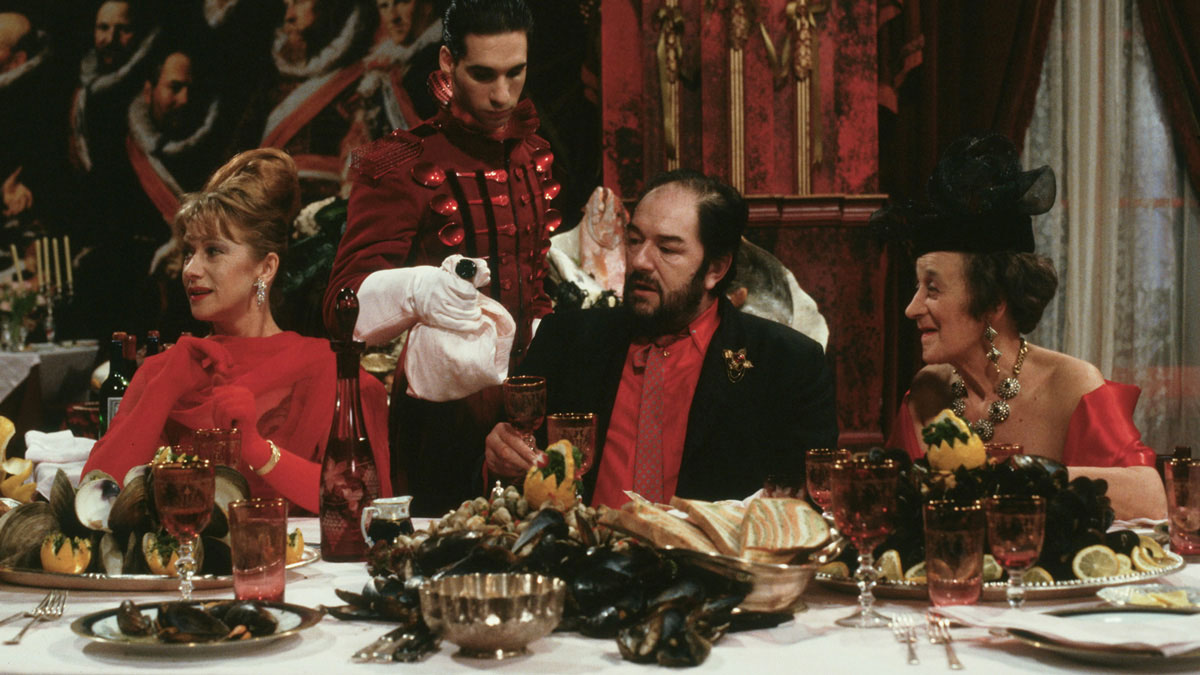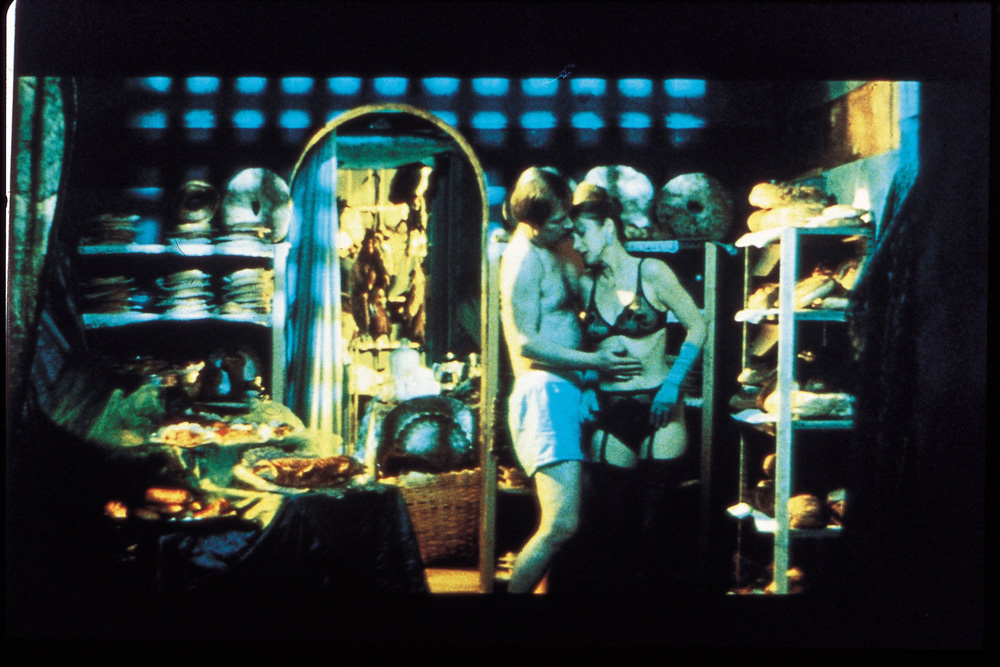
(c) Photofest / Getty Images
``The Cook, the Thief, His Wife & Her Lover'' Tragedy or comedy? A revenge picture scroll full of beauty and ugliness born from a love for Dutch paintings.
What is the essence of Greenaway aesthetics?
First of all, what is the aesthetic that director Greenaway has followed not only in this film but also in his previous works? What is its origin? A hint of the answer can be found in the art decoration of this work. This is a Western painting that is displayed over and over again in the main dining room of the French restaurant where the story takes place, and appears over and over again throughout the play.
"The Dinner of the Officers of the City Guard of St. George" by Frans Hals. Frans Hals was a representative painter of the Golden Age of Dutch painting, which was influenced by the Baroque period of the 17th century, and lived during the same period as Rembrandt and Vermeer. This group portrait, written around 1616 when Hals was 34 years old, deviates from the typical triangular (trapezoidal) composition up until then, and uses diagonal shapes that rise from left to right, giving it a mediocre expression. It is distinctive in that it gives a lively and dynamic feeling.
The emotional dynamism of the Baroque style, which was born in Italy from the end of the 16th century to the beginning of the 17th century and quickly spread throughout Europe, and the sophisticated technique of manipulating light and shadow represented by Vermeer and Rembrandt. These skills were acquired by painters supported by Dutch patrons who had gained enormous wealth through the world's greatest prosperity, and their skills improved.

“The Cook, the Thief, His Wife & Her Lover” (C) 1990 ROAST, BV AND ERATO FILMS/FILMS INC. ALL RIGHTS RESERVED.
When he was young, director Greenaway, who aspired to become a painter, was fascinated by Dutch painters, discovered the ``not-instantaneous storytelling'' in advanced depiction techniques, and began to feel the fascination of photography and film. Also, the director, who had always been interested in "life" and "sexuality" from that time, was searching for a format that would allow for deeper expression, but the fact that "pictures do not have soundtracks" limited his ability to express himself. Feeling this, he decided to turn to film as a comprehensive art form.
Even after establishing his reputation as a director, he remained devoted to Dutch paintings that mastered the control of light and shadow. Performance. In 2007, he produced the film `` Rembrandt's Night Watch .'' He calls Rembrandt a magician of light, and says that how to manipulate artificial light is important in movies, and that Rembrandt was the first film director.
"Rembrandt's Night Watch" trailer
He does not deny or affirm people's desires, but views them as the same as living and dying, and boldly reflects them as they are. Control artificial light as you wish and convey Arrival without missing a beat. Director Greenaway's idea came to fruition when he encountered Dutch painting, and eventually blossomed into a film format.
From that perspective, the many features of this work also make sense. How much information can be packed into a single painting, and how can light, shadow, color, and the movement of a person be produced without waste?
For example, the main locations are set in color through decoration and lighting: the parking lot, which is the only place outside and depicts ruthless violence, is blue, the kitchen where the honest cooks live is green, and the main dining room is where the desire is aroused. The colors are red, the restrooms are white to calm people down, and the entrance where many people come and go is colorless, all of which instantly induce the audience to feel the desired emotion on an unconscious level.
Additionally, when a person moves through a room, the camera moves with them, and if they wipe out a single wall for a moment, the color of their costume changes to match the background in the next room.
“The Cook, the Thief, His Wife & Her Lover” main video
The images are framed in Cinemascope size, the longest horizontal format, and make extensive use of symmetry and horizontal camera movement to create a sense of regularity and tension, while also skillfully using perspective in some scenes. , creating a sense of endless depth and a sense of openness and dynamism.
Heavy baroque music and sad boy soprano are repeated throughout the film, gradually building up to the climax.

